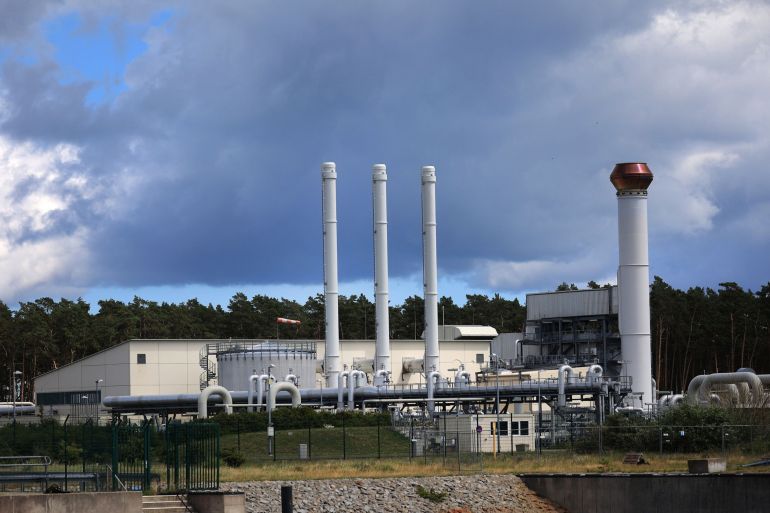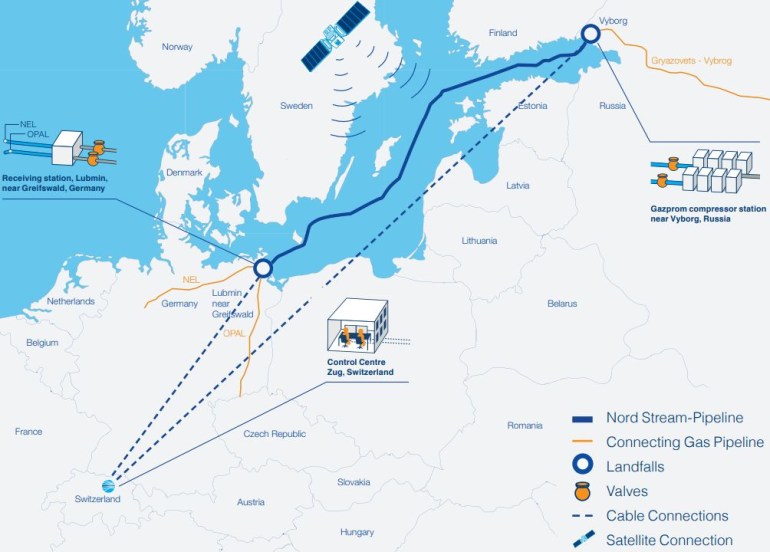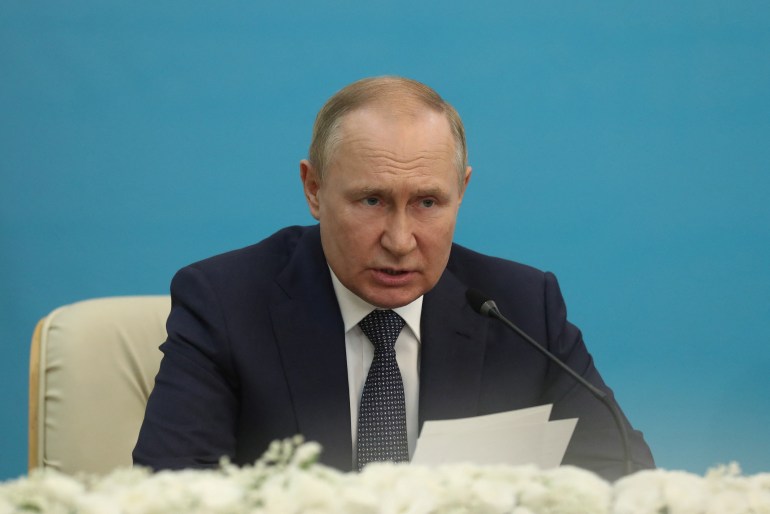Europe awaits Nord Stream 1 restart as supply uncertainty swirls
The European Commission is asking the bloc’s member states to consider cutting back 15 percent of their natural gas use for the next eight months.

Already battered by a record-shattering heat wave and soaring inflation, Europe may soon face a dangerous energy crisis.
The European Union on Wednesday urged its 27 member states to reduce gas usage by 15 percent from August through March of next year, as concerns mount that Russia may cut off gas flow to the region.
Keep reading
list of 4 itemsFive things to know about the next US housing crisis
Crypto will not save Russia from sanctions, experts say
Germany pauses Nord Stream 2 certification process over Ukraine
“Europe’s gas markets have experienced months of confusion and apprehension as Russian gas supplies have fluctuated,” Kaushal Ramesh, senior gas analyst at Rystad Energy, an Oslo, Norway-based research firm, told Al Jazeera. “Much of this is out of Europe’s control.”
Russia’s President Vladimir Putin has indicated that gas shipments via the Nord Stream 1 pipeline will restart as soon as maintenance is complete but also warned that flows may be limited unless a dispute over sanctioned parts is resolved.
More than one-third of Russian gas shipments to the EU go through the Nord Stream 1 pipeline. It has been shut down since July 11 for yearly maintenance; deliveries are expected to resume on Thursday.
“The general expectation is that flows via Nord Stream tomorrow will reach a maximum capacity of 67 million cubic metres, but this may drop to 30 million in the days to come as a second turbine now requires maintenance,” Rystad’s Ramesh explained.
The conflict in Ukraine has caused interruptions in supply already, and is expected to keep impacting energy flows.
Europe’s nations are having difficulty replenishing their gas reserves ahead of the winter months. Natural gas is essential to heat homes and power factories, and an energy crisis could further threaten Europe’s shaky economic recovery from a pandemic-induced downturn.

EU nations will now consider the rationing plan put forth by the European Commission. According to the proposal, the bloc’s member states must reduce their gas usage by 15 percent from their average levels over the same months between 2016 and 2021. Ministers will discuss the action on Friday in order to ratify it the following week.
Nord Stream parts and politics
Russia’s Gazprom reduced gas shipments through the Nord Stream 1 pipeline to 40 percent of capacity last month. Russia said the cuts were attributed to delays in the return of a turbine being serviced in Canada.
This week, it was reported that the part, which had been affected by EU and Canadian sanctions on Russia over its invasion of Ukraine, was returning. But on Wednesday Gazprom said it had not yet received “any official documents” necessary to reinstall the turbine engine and stressed that the equipment’s maintenance and return “have a direct influence on the operational safety of the Nord Stream gas pipeline”.
— Gazprom (@GazpromEN) July 20, 2022
“Restarting gas flows provides Russia with a unique opportunity to seek concessions. We might see Russia seeking to limit arms flows to Ukraine, or something related,” Jim Krane, an energy analyst at Rice University in Houston, Texas, told Al Jazeera. “A shutoff would breach contractual terms and suggest to the rest of the world that Russian energy contracts require political allegiance, not just legal adherence.”

In earlier statements, Putin claimed that one of Nord Stream 1’s five Siemens Energy-operated gas pumping units was inoperable and that a second was scheduled to be transported for maintenance on July 26.
He has also said that if a component of the pipeline is not returned to Russia because of sanctions, the link will only operate at 20 percent of its potential as early as next week because another part that is currently in Russia needs to be serviced.
“If another comes, two will operate. If not, just one, so 30 million cubic metres will be pumped per day,” he told reporters late Tuesday in Iran on the heels of talks with the country’s leader.
Putin has also claimed that Gazprom, which has a monopoly on Russian pipeline gas exports, is not to blame for the drop in the amount of gas that can be transported to Europe.
He blamed Kyiv for closing one route via Ukraine but Ukraine’s authorities claim the shutdown is due to Russia’s invasion.
European nations were scrambling for alternative energy supplies long before Russia invaded Ukraine as demand for fuel soared when economies opened up after being pummeled by the pandemic.